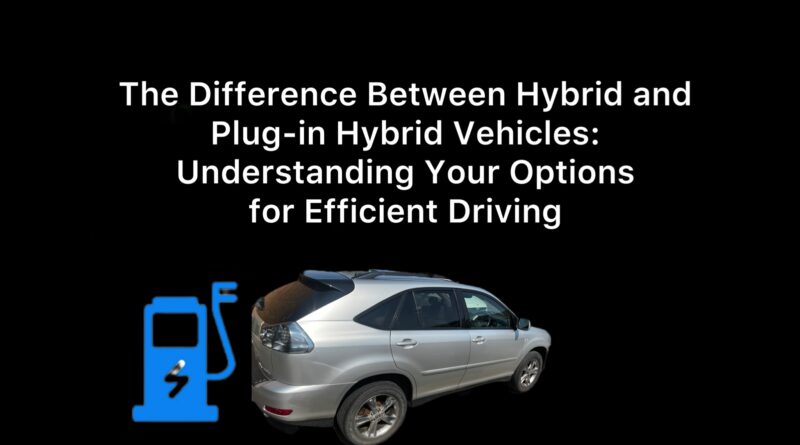The Difference Between Hybrid and Plug-in Hybrid Vehicles: Understanding Your Options for Efficient Driving
When it comes to environmentally friendly and fuel-efficient vehicles, both hybrid and plug-in hybrid models offer significant advantages. However, understanding the differences between these two types of vehicles can help you make an informed decision based on your driving needs and sustainability goals. Let’s explore the key distinctions between hybrid and plug-in hybrid vehicles. Buying hybrid vehicle what to know.
- Powertrain Configuration:
- Hybrid: A hybrid vehicle combines an internal combustion engine (ICE) with an electric motor. The electric motor assists the ICE, especially during acceleration and low-speed driving. The battery in a hybrid is charged through regenerative braking and the ICE’s power generation, not by plugging it into an external power source.
- Plug-in Hybrid (PHEV): A plug-in hybrid vehicle also combines an ICE with an electric motor. However, what sets PHEVs apart is the ability to recharge their larger battery packs by plugging them into an external power source, typically an electrical outlet or charging station. This allows for extended all-electric driving range before the ICE kicks in.
- Electric Driving Range:
- Hybrid: In a hybrid, the electric motor assists the ICE, but the electric-only range is limited. The battery is smaller and primarily used to supplement the ICE’s power, resulting in improved fuel efficiency.
- Plug-in Hybrid: PHEVs have larger battery packs, allowing for a more significant electric-only range. This means you can drive solely on electricity for a certain distance before the vehicle switches to hybrid mode and relies on the ICE. The electric range can vary significantly between different PHEV models.
- Charging:
- Hybrid: A hybrid vehicle’s battery is charged automatically through regenerative braking and the ICE’s power generation. There is no need for external charging as the system recharges the battery during normal driving.
- Plug-in Hybrid: PHEVs have a larger battery that can be recharged by plugging into an external power source. This allows you to charge the battery at home, at work, or at public charging stations, providing the opportunity for extended electric-only driving.
- Fuel Efficiency:
- Hybrid: Hybrids offer improved fuel efficiency compared to conventional vehicles by utilizing the electric motor’s assistance to reduce reliance on the ICE. They are particularly efficient in stop-and-go traffic and during low-speed driving.
- Plug-in Hybrid: PHEVs can provide even greater fuel efficiency, especially for shorter commutes or when driving in areas with easy access to charging infrastructure. By maximizing electric-only driving, they offer reduced fuel consumption and lower emissions.
Choosing between a hybrid and a plug-in hybrid depends on your driving habits, access to charging infrastructure, and desired electric-only range. If you have shorter daily commutes or regular access to charging stations, a PHEV might offer more significant benefits in terms of reduced fuel consumption and emissions. On the other hand, if you primarily drive longer distances and have limited access to charging infrastructure, a hybrid could be a practical and efficient choice.
Ultimately, both hybrid and plug-in hybrid vehicles contribute to a more sustainable and eco-friendly transportation landscape. Understanding the differences between these two options empowers you to choose the vehicle that aligns best with your lifestyle, driving patterns, and environmental goals.
Buying a used VW. Buying used vauxhall, BMW, Jaguar, Ford, Volvo, Range rover, Bentley, Aston Martin, Porsche, Ferrari, Lamborghini, Maserati, Hyundai, Tesla, Honda, Pagani

